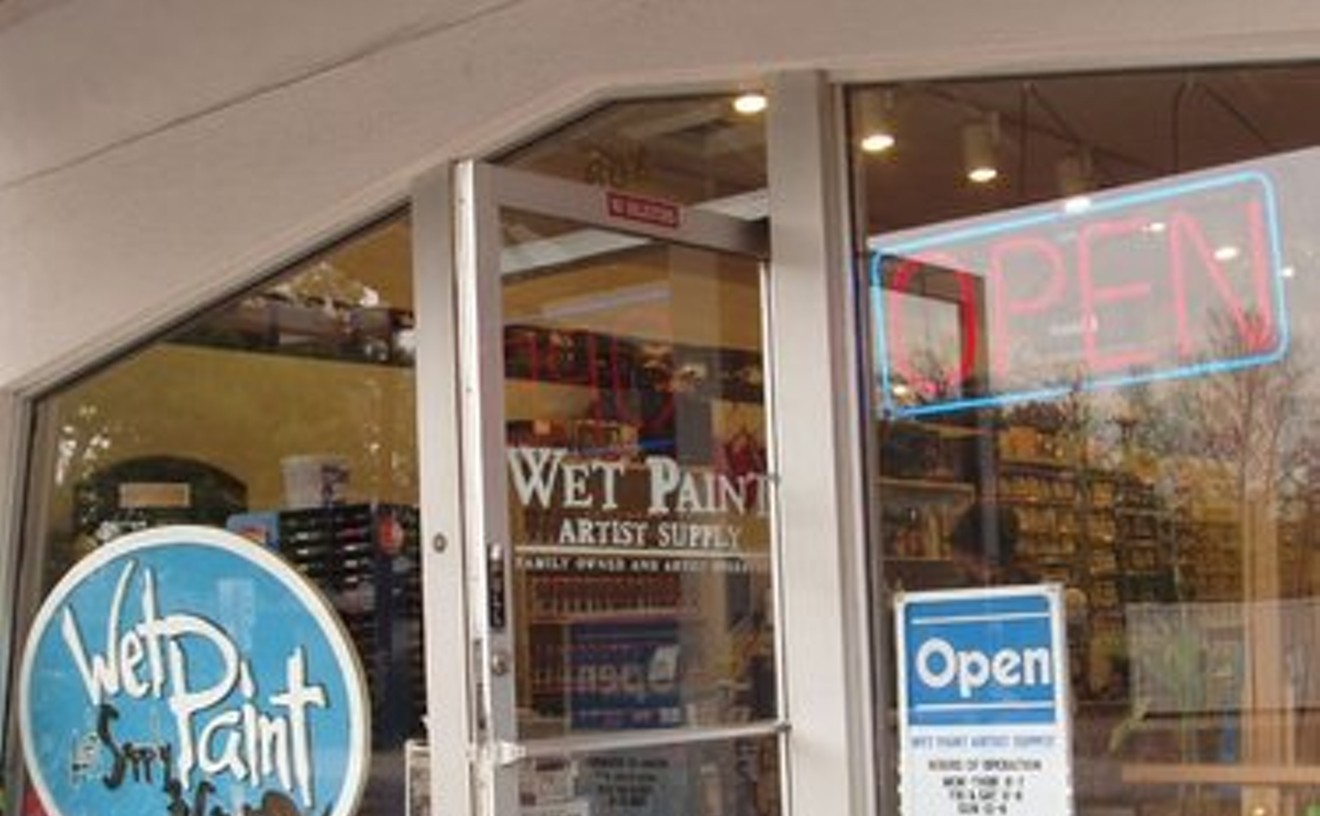BEST PLACE TO SEE AND BE SEEN ON A FINAL FRIDAY
Wet Paint

- 806 S. Ash Ave., Tempe, 85281 Map
- 480-967-2002
- www.wetpaintaz.com
BEST NEW GALLERY
The Chocolate Factory
- 1105 Grand Ave., Phoenix, 85007 Map
- 602-920-7560
BEST ROCK DJ
William Fucking Reed
BEST SAVE
Tigerface
BEST STOP ON ART DETOUR
The studio of Carrie Marill and Matt Moore

Husband and wife, Marill and Moore peacefully and productively co-exist in their joint studio space, and, while their work is very different, you get the feeling that, in many ways, they share not only physical space, but the same basic aesthetic as well. Moore's work is land-based, inspired by his day job as manager of his family's fourth-generation farm in the West Valley. Marill's stylistically stripped-down yet elegant paintings and drawings of various landscapes explore the idea of the sameness that pervades society.
As we stood gazing at Marill's beautiful paintings, an artist we trust whispered, "Buy something -- she's getting big in L.A." (See our "Fun and Games" section in Best of Phoenix for examples of Marill's work.) So we did, after which Moore offered us a gigantic home-grown carrot, which, along with the couple's artwork, was the sweetest thing we'd tasted all weekend.
- 1023 Grand Ave., Studio D, Phoenix, 85007 Map
- 602-214-9502
- www.urbanplough.com
BEST CONSOLATION FOR AGING PUNKS
Jeff Dahl 50th Birthday Blast
BEST MOBILE GUERRILLA GALLERY
2 Kaotik Gallery
BEST MUSEUM YOU'VE NEVER BEEN TO
The Bead Museum

- 5754 W. Glenn Dr., Glendale, 85301 Map
- 623-931-2737
- www.beadmuseumaz.org
BEST PLACE TO SIT AND ROTATE
The Compass Room at the Hyatt Regency Phoenix

- 122 N. Second St., Phoenix, 85004 Map
- 602-252-1234
- www.phoenix.hyatt.com/hyatt/hotels/index.jsp?null
BEST MINI CACTUS TOUR
The Barry Goldwater Memorial

- E. Lincoln Dr., Paradise Valley, 85253 Map





